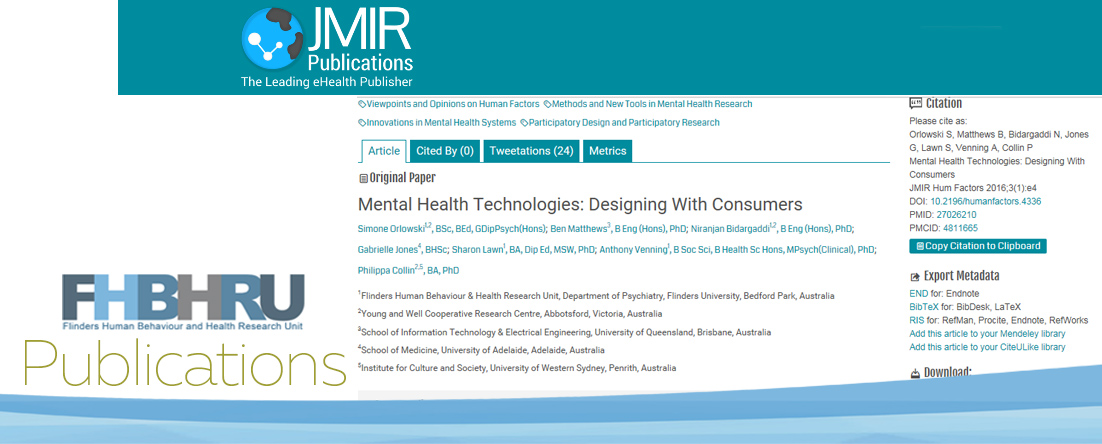
Mental Health Technologies: Designing With Consumers
Mental Health Technologies: Designing with Consumers – Simone Orlowski, Ben Matthews, Niranjan Bidargaddi, Gabrielle Jones, Professor Sharon Lawn, Dr Anthony Venning, Philippa Collin
JMIR Human Factors – Published 28 January 2016 – Vol 3, No 1 (2016)
Abstract
Despite growing interest in the promise of e-mental and well-being interventions, little supporting literature exists to guide their design and the evaluation of their effectiveness. Both participatory design (PD) and design thinking (DT) have emerged as approaches that hold significant potential for supportingdesign in this space. Each approach is difficult to definitively circumscribe, and as such has been enacted as a process, a mind-set, specific practices/techniques, or a combination thereof. At its core, however, PD is a design research tradition that emphasizes egalitarian partnerships with end users. In contrast, DT is in the process of becoming a management concept tied to innovation with strong roots in business and education. From a health researcher viewpoint, while PD can be reduced to a number of replicable stages that involve particular methods, techniques, and outputs, projects often take vastly different forms and effective PD projects and practice have traditionally required technology-specific (eg, computer science) and domain-specific (eg, an application domain, such as patient support services)
knowledge. In contrast, DT offers a practical off-the-shelf toolkit of approaches that at face value have more potential to have a quick impact and be successfully applied by novice practitioners (and those looking to include a more human-centered focus in their work). Via 2 case studies we explore the continuum of similarities and differences between PD and DT in order to provide an initial recommendation for what health researchers might reasonably expect from each in terms of process and outcome in the design of e-mental health interventions. We suggest that the sensibilities that DT shares with PD (ie, deep engagement and collaboration with end users and an inclusive and multidisciplinary practice) are precisely the aspects of DT that must be emphasized in any application to mental health provision and that any technology development process must prioritize empathy and understanding over innovation for the successful uptake of technology in this space.
Read the full journal article here: http://humanfactors.jmir.org/2016/1/e4/?trendmd-shared=0
